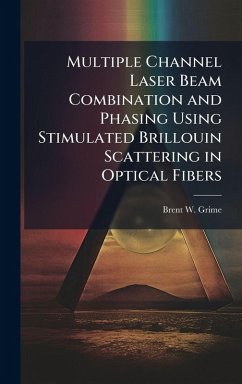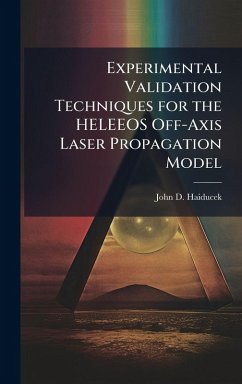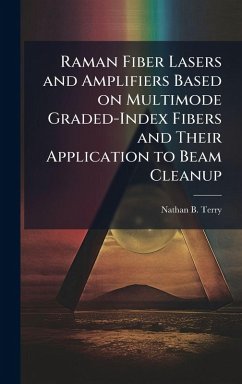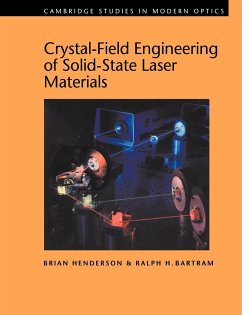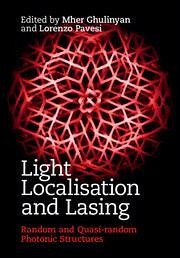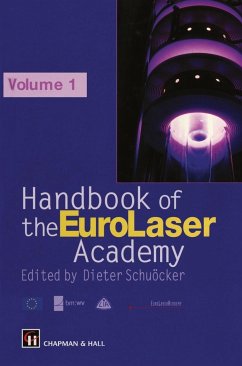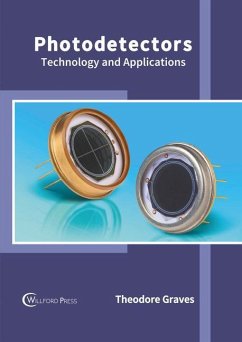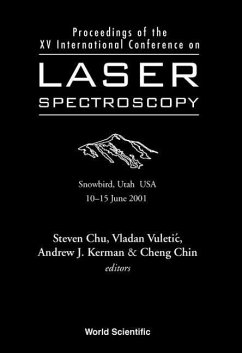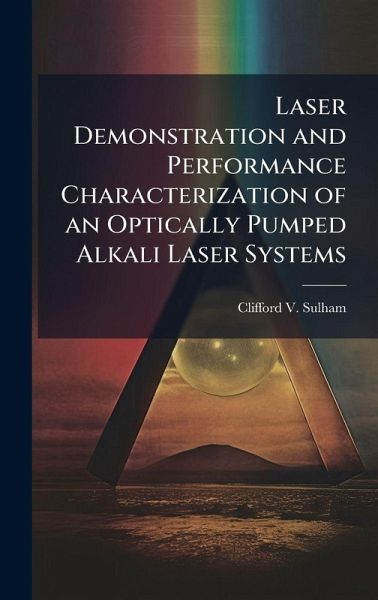
Laser Demonstration and Performance Characterization of an Optically Pumped Alkali Laser Systems
Versandkostenfrei!
Versandfertig in über 4 Wochen
29,99 €
inkl. MwSt.
Weitere Ausgaben:

PAYBACK Punkte
15 °P sammeln!
Diode Pumped Alkali Lasers (DPALs) offer a promising approach for high power lasers in military applications that won't suffer from the long logistical trails of chemical lasers or the thermal management issues of diode pumped solid state lasers. This research focuses on characterizing a DPAL type system to gain a better understanding of using this type of laser as a directed energy weapon. A rubidium laser operating at 795nm is optically pumped by a pulsed titanium sapphire laser to investigate the dynamics of DPALs at pump intensities between 1.3 and 45 kW/cm2 . Linear scaling as high as 32 ...
Diode Pumped Alkali Lasers (DPALs) offer a promising approach for high power lasers in military applications that won't suffer from the long logistical trails of chemical lasers or the thermal management issues of diode pumped solid state lasers. This research focuses on characterizing a DPAL type system to gain a better understanding of using this type of laser as a directed energy weapon. A rubidium laser operating at 795nm is optically pumped by a pulsed titanium sapphire laser to investigate the dynamics of DPALs at pump intensities between 1.3 and 45 kW/cm2 . Linear scaling as high as 32 times threshold is observed, with no evidence of second order kinetics. Comparison of laser characteristics with a quasi-two level analytic model suggests performance near the ideal steady-state limit, with the exception of mode matching. Additionally, the peak power has scaled linearly as high as 1 kW, suggesting aperature scaling to a few cm2 is sufficient to achieve tactical level laser powers. The temporal dynamics of the 100ns pump and rubidium laser pulses are presented, and the continually evolving laser efficiency provides insight into the bottlenecking of the rubidium atoms in the 2P3/2 state. Lastly, multiple excited states of rubidium and cesium were accessed through two photon absorption in the red, and yielded a blue and an IR photon through amplified stimulated emission. This work has been selected by scholars as being culturally important, and is part of the knowledge base of civilization as we know it. This work was reproduced from the original artifact, and remains as true to the original work as possible. Therefore, you will see the original copyright references, library stamps (as most of these works have been housed in our most important libraries around the world), and other notations in the work. This work is in the public domain in the United States of America, and possibly other nations. Within the United States, you may freely copy and distribute this work, as no entity (individual or corporate) has a copyright on the body of the work. As a reproduction of a historical artifact, this work may contain missing or blurred pages, poor pictures, errant marks, etc. Scholars believe, and we concur, that this work is important enough to be preserved, reproduced, and made generally available to the public. We appreciate your support of the preservation process, and thank you for being an important part of keeping this knowledge alive and relevant.



